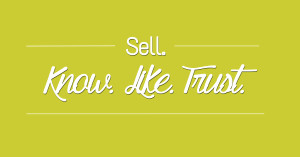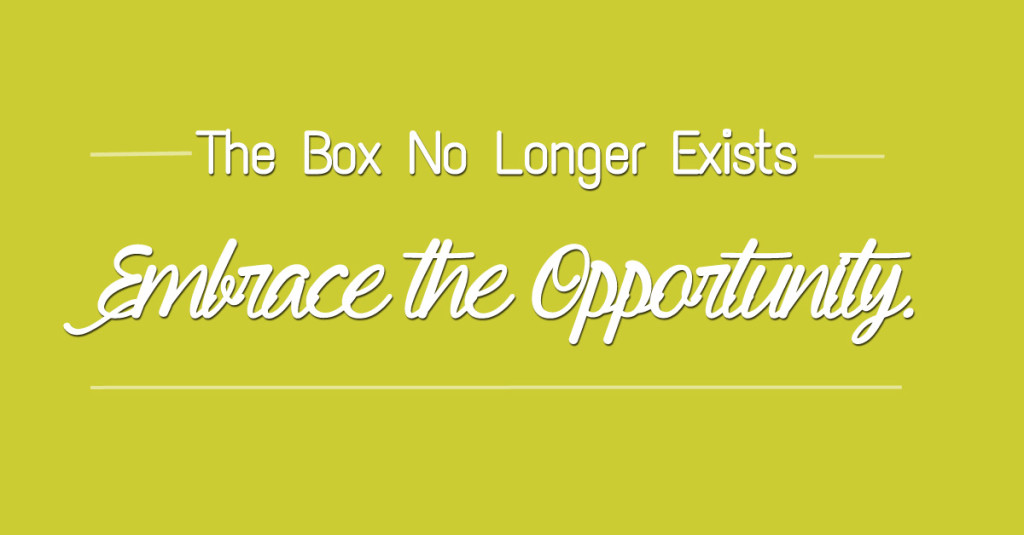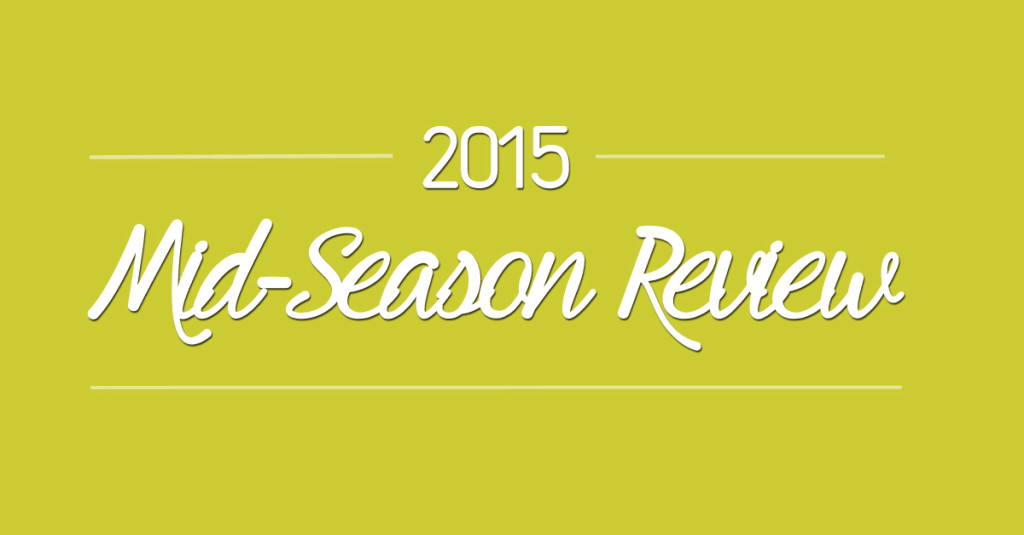Where all the fun happens.
Dropping knowledge left and right. But mostly left.
Know. Like. Trust. (Or, how to make customers.)
“All things being equal people will do business with, and refer business to, those people they know, like, and trust.” – The Go-Giver by Bob Burg and John David Mann
Marketers throw around the phrase ‘know, like, trust’ like pitchers throw around, well, balls. You’ve probably heard it before and completely ignored it, because what does that matter in racing? That’s marketing.
 Here’s how it applies to racing (which, by the way, is how it applies to the real world because we’re not that different!): in order to become a customer – whether that’s a sponsor, ticket holder or apparel buyer – a person has to trust you. You build trust with a potential customer by getting them to like you.
Here’s how it applies to racing (which, by the way, is how it applies to the real world because we’re not that different!): in order to become a customer – whether that’s a sponsor, ticket holder or apparel buyer – a person has to trust you. You build trust with a potential customer by getting them to like you.
In order for a customer to like you, they have to get to know you.
In effect, first they get to know you. Then, they like you. As they like you, they trust you. Only then will they consider buying from you.
Putting yourself out there consistently is the first step. That means both online and in person.
Here’s how I get to know people:
- Talk to them. Shocking, if you know me. I’m quiet, but I actually do talk to people!!
- Use social media. Tweet. Snapchat. Periscope.
- View their website, read their articles or look at other non-social content.
- Look at their associations with other people I already know.
Telling your story authentically is the second step in getting them to like you.
Here’s how I decide if I like someone:
- Their interests, attitudes and values align with mine.
- Their sense of humor. Do they get it?
- Their respect for other people’s time. Do they respond to people? Are they nice?
- They mention unicorns, sprint cars, butter coffee, bacon or my dog. (I wish this was a joke.)
Combining these things – consistency and authenticity – is what helps a potential customer to trust you.
Here’s why I trust certain people:
- They show up, even when they make mistakes.
- They treat other people well.
- Other people speak highly of them.
Your reasons are probably different than mine, and you need to think about what your reasons might be. Now, what might your ideal customer’s know, like and trust reasons be?
The next time you see people flocking to a buy something, anything, think about why they trust that person or business. Do they know them? Do they like them? Do they trust them?
And why?
xo.
Kristin
Sponsorship: The DirtyMouth Philosophy
This week (as opposed to some other weeks, to be perfectly honest), I’m taking my own advice. Many of you have been with me for the nearly two years that I’ve consistently blogged every Thursday, but others are brand new. That’s why I thought it might be a good time to take a broader look at one of the most popular topics here – racing sponsorship – and my philosophy. So, let’s break it all down.
What is Sponsorship? 
You probably already have an idea of what sponsorship is. When a company gives a race team money, right? Kind of.
The mainstream outlook is that sponsorship is a company giving a race team money to support their racing efforts. The problem with this viewpoint is that it doesn’t reflect what the company gets in exchange for their money. Here, the sponsorship is all about what the company is doing for the racer, not what the racer is doing for the company.
My definition of sponsorship is this: a marketing value exchange between two properties.
I’m not trying to oversimplify here – most people do recognize that companies don’t just give you money to help you. (They get a logo on the car that hundreds, maybe even thousands, of people will see, right?!) But that’s what I see most sponsorship seekers focus on: how helpful sponsorship will be to their operation.
This might have worked in the past for local, mom-and-pop businesses that you patronized, but even those companies – the companies that love you and truly want to support your dream – have become wise to the need for a value exchange.
And the problem is, the math doesn’t work on the amount of exposure a logo gets as compared to the investment.
So, we need to focus on the value exchange and what it will do for the sponsoring company, not what it will do for you.
The Marketing Value Exchange (or How Sponsorship Really Works)
The marketing value exchange is a fancy way of saying ‘here’s what a sponsor gets for their money’.
So what can the sponsor get (and give) for a value exchange?
The sponsor might want:
- Exposure to an audience (made up of people that they want to reach, an important distinction). This can simply be a logo on a race car, but it can also include logos on other properties like your race suit, hauler, pit vehicles, and mentions on your press releases and announcer activation.
- Exclusive access to your audience through marketing content or in-person at events.
- To be promoted via your social media channels.
- Introductions to other business owners in their marketplace for business-to-business relationships.
- Entertainment packages for customer or employee appreciation.
- The list goes on…
What Sponsors are Looking For
This is where the rubber meets the proverbial track. You now know that you can’t just pitch a sponsor on helping you achieve your dreams. You have to present a value exchange.
But you can’t just present any value exchange. You have to pitch the right value exchange for that company.
I’ve worked with – I’d guess – close to a hundred companies on marketing and sponsorship. Maybe more. Every one of them had a different objective, and needed a different set of value exchanges.
So how do you know what value exchange will appeal to them? You could write an entire book on any one of these questions, and this is no exception. But I’ll suggest this: start with research.
Look at the company’s website. See what kind of imagery they’re using and what the people in those images look like. Check out what kind of events and partnerships the company is already involved with. Those are great clues to what kind of audience they want to reach and how they want to do that.
Above All Else…
Remember this: sponsorship isn’t a gift.
Sponsorship is a marketing partnership, and in order to secure that partnership you have to make it more about the company than about you.
Want more? Here are a few of the most popular blog posts about sponsorship and how to activate it:
- Sponsorship Pricing: It’s Too Expensive vs. It’s Not Worth It
- Sponsorship Activation: Earning Your Money (and a Long-Term Partner)
- Finding a Sponsor is Like Online Dating (Or, why sponsorship templates don’t work.)
- Searching for sponsors this off-season? Ask yourself these 2 questions.
- Prove your (sponsorship) worth with real, hard metrics.
xo.
Kristin
Everything is Competition. Embrace the Opportunity.
Last night, I was fortunate to get an invitation to a Cornell University alumni event through my Columbia alumni club. The gathering centered around a talk from alumnus Jeff Broadhurst, who is the CEO of Eat ‘n Park, an iconic chain of Pittsburgh-based restaurants, as well as other gourmet establishments and a catering venture.
At the end, the group was invited to ask questions and an attendee asked about how blurry the lines were now for businesses in terms of fitting into a certain category.
 Broadhurst joked that now, more than ever, when asked who his competition was he could honestly respond: everyone.
Broadhurst joked that now, more than ever, when asked who his competition was he could honestly respond: everyone.
Gas stations are now serving fast food. Fast food restaurants are venturing into gourmet ingredients. Grocery stores now have gourmet coffee and high-end establishments have food trucks.
It’s difficult to be unique, and communicate your uniqueness, in a crowded market.
What I liked about Broadhurst was his positive spin on the ever-changing business landscape. Instead of focusing on the difficulty, he spoke to the opportunity.
With so much competition and differentiation, you no longer have to fit in the proverbial box.
There has never been a better time to do things differently than your competition. There has never been a better time to carve out your own niche, with your own audience.
Race tracks are not alone in competing with everyone for race fans time, attention and money. We can complain about how we’re competing against the movie theaters, restaurants, theme parks and house parties, or we can look at the opportunity to be the grocery store with a gourmet coffee shop.
Does every race track serve hamburgers? Probably. Do many serve gourmet salads? Probably not. What if you became the place to go for gourmet ice cream, healthy options, a mobile arcade for kids, or a retro-style experience with the connectivity we crave?
Race car drivers don’t have to be into country music or lifted trucks. Although that’s fine if that’s your passion. You can be refined, you can be professional, you even can be a girl.
A unique differentiator is just that: a differentiator. It’s what sets you apart. It’s what makes you like-able with a group of people that’s like you, or wants to be like you.
Do you know how many gas stations I’ve eaten in without being on the way to or from a race track in my life? Not many. Do you know how many times I’ve left my own home to drive to Sheetz for a salad in the past week? More than once.
The lines are blurry. And that’s an opportunity to be different than the norm.
I don’t know about you, but that’s pretty exciting to me.
xo.
Kristin
Making New Fans Feel Invited
Have you ever walked into a crowded restaurant and felt the whole place turn around? Their eyes take you in and the room seems to go silent. You know, somehow, you broke their code. You used the wrong door, you wore the wrong clothes.
You’ve walked in on a story that you’re (obviously) not a part of. 
Then there are the other crowded restaurants, the ones that you walk into and feel like you’ve discovered something. There’s a story here, too. But it’s one that you’re excited to have caught a glimpse into.
There’s something special going on here. And now, you want to know more.
Many of you have been around the blog for a while, but for others, this might be your first visit. Every day, new people happen on to my website, Twitter feed, or Facebook page. The same goes for you, whether you’re a race track welcoming new fans through the gate or a racer getting a retweet.
You know you need to tell your story. I know you already know how important that is.
But while we’re all in the middle of telling our stories – you started the day you put yourself out there – people are tuning in at different points.
How much getting up to speed will that new potential fan need to get invested? How long do they need to see or know to care?
I’m not saying that you need to treat every tweet, every piece of signage, and every interaction as if the person is new. Or a beginner. But you do need to be welcoming and inclusive.
Help people to feel like there’s an inside joke, but they can be a part of it if they hang around.
Posting updates sporadically, only replying here and there, is like only talking to the people around your car or race track that you already know. The people who don’t know you – the ones that you need invite in, that your sponsors want to reach! – will assume that they aren’t welcome. They can’t catch up because you’re not giving them the opportunity.
One of the biggest strengths of our sport is that we are a strong community. We’re a family. And we need to welcome in new family members. We need people to want to be a part of our family.
How can you make your team, track or business something people want to be a part of?
Tell your story consistently, authentically, and invitingly. It’s something that others want to be a part of. Show them.
xo.
Kristin
It’s Mid-Season Review Time!
It’s hard to believe that we’re already at the mid-point of the season, especially with the weather challenges we’ve had in the Pennsylvania area with rain, and lots of it. In fact, our team has had more rain outs on our schedule than races.
Weather – be it rain or the heat waves that my Southern clients are facing – doesn’t stop me from doing business, although it does make it more challenging to help tracks and racers make money when they can’t race. In fact, this year has been the busiest one yet for me and DirtyMouth, despite the challenges.

When 2015 rolled in, I had high hopes. I put together a strategy and a set of goals to shoot for, and I made that into a giant post-it that hangs in my office. It’s been extremely helpful to have a visual reminder of where I want to go.
The theme I picked for the year was ‘Growth’. I wanted to grow my audience as big as possible so that I a) knew what the industry needed and b) could grow the business.
But lately, every time I glance at it, it hasn’t seemed to resonate. The problem? The business grew faster, and in different ways, than I expected it to.
So, last Friday I took 2 hours ‘off’ for the Fourth of July to sit down and do a mid-season review. Here are three things I learned:
There’s a big difference between a vision and a plan.
I know where I want to go with DirtyMouth. I haven’t fully shared that vision because, frankly, it’s scary and vulnerable to talk about how big I want this thing to get. And when I say ‘big’, I’m not referring to income. I’m talking about reach and impact. I want to help this sport grow and evolve by helping the tracks, teams and businesses that depend on it grow the fan base and operate at a higher level.
At the beginning of the year, I chose a few tactics that I thought would help me fulfill my ‘Growth’ theme. But by the time March rolled around, I had stopped pursuing them. Why? The business grew to the point that I didn’t have time to grow the audience anymore – I had to focus on serving my clients.
I’m lucky that things worked out in this way – adjustments don’t always happen for positive reasons – but my mid-season review tells me this:
The plan, and the goals you set within it, is there to help you achieve your bigger vision. The plan needs to adjust for all of the unexpected that happens in between them.
My weather-affected clients have found this. My non-weather-affected clients experience this. We’ve even seen it with our race team, being unexpectedly down an engine. We’ve had to adjust our schedule to account for the age and size of the motor we have now.
But changing strategy doesn’t mean we’re not working towards a bigger vision. We just have to take a step back and adjust.
Don’t underestimate the busiest time of the year.
As much as I do a good job of this for my clients – the bulk of the work for The Dirt Classic, for example, was strategically laid out in January and February – I am crap at it for myself.
Of course, I know that racing season is when my clients will need me most. I also know that I have less ‘extra’ time – evenings and weekends – to give them because of racing and traveling to racing events.
But what I forget is that summer time is also when a lot of my favorite parts of life happen. It’s when the shock dyno and car-building business is best for Carl (which borrows him from my business), it’s when we can do outdoor renovations, it’s when we can do appearances with the race car, it’s when I can have friends over for barbecues and attend family picnics, it’s when I have the best access to data – at least, that data that I can process and apply to tracks and teams within the season, when it’s useful…etc.
Summer isn’t just racing and business. It’s life.
I don’t always know the best way to adjust for this: the time when I most want to be relaxed is the time when life is craziest. My mid-season review told me that I have to apply what I do for my clients in terms of advanced planning and advanced executing (if that’s a thing) to my business and life.
Do you run into that, too?
Your target customer (or fan) might change.
When I started the year, my goal was to reach more promoters and track owners. Why? I don’t have a product to sell, so my ideal customer is working with me on consulting and social media services. Those who treat their business like, well, a business are more likely to be interested in paying for services. So, while I do coach, that’s not my primary income.
At this point in the year, I’ve hit my goal on reaching and serving track promoters. That’s not to say that I won’t take any more on, but I did hit my target about six months ahead of time.
Which means, now I can focus more on growing and serving the driver and team audience. How? I’m working on a few projects, one of which I hope to announce in the coming weeks. I’m reinvesting back into the business to build something that doesn’t require so much me time, which will make my services much more affordable for drivers and help reach a much wider audience.
Whew. Those are three things I learned from a mid-season review. As you can probably tell, we’re doing this for our race team, too. Hopefully what we learn will help us keep our momentum going both on the track and off.
Do you do a mid-season review or do you wait until it’s time to set goals for the next year? Here’s a link to another post that might help you do your own mid-season or end-of-year check in.
xo.
Kristin
Up Your Racing Social Media Game with 5 Tools
Working on as many social media accounts as I do, I’ve used tons of tools to help clients get the most bang for their buck in terms of time, budget and effort. There are thousands of them out there, but not all of them work the way they say they do. That’s why I’m the guinea pig testing hundreds of tools and platforms!
Here are five of my favorite (FREE!) pre-tested tools that will help you take your social media game to the next level:

For Social Media Graphics: Canva.com
Images are crucial to social media success, especially in racing. What’s more visual than our sport? Takeadvantage of the opportunity to show off your goods with Canva.
Canva is one of the easiest to use design websites out there. But that’s not the only reason I love them. One of my favorite features are their templates. Whether you want a new Facebook profile image, Twitter cover photo or just a photo that looks great on your updates, Canva has templates for all of them.
They even have a ‘design school’ that walks you through how to use the site and gives great ideas for different graphics packages. I love one of their recent posts – Steal These 50 Branding Kits – which helps you to see the importance of consistent branding across all channels, from your social media to your – cough! – racing sponsorship proposals.
Make it custom to your team or track by combining your own images with their beautiful fonts and graphics.
For Social Media Scheduling: Hootsuite.com
This should read: for making sure that you regularly activate your partnerships…but I digress. Scheduling is good for a number of things, from ensuring that your sponsors are happy to planning promotions and updates.
For example, are you doing a t-shirt sale on Friday night? Upload your text and graphics to Hootsuite ahead of time and picking a day and time to release it. You can either stop worrying about having everything on your phone at the race track OR you can actually do the promotions that you don’t normally have time to on the day of OR you can stop posting updates only when you’re able to, whether that’s the most optimal time or not. I think you get the picture: scheduling makes life better.
You can use Hootsuite to schedule updates on Twitter (my favorite!), Facebook (schedule them on Facebook itself for more reach), LinkedIn and Google+. The only caveat is this: if you’re using it to upload Twitter images, consider popping for the Pro version. It’s $9.99/month right now, but it allows your images to show up as native Twitter pics instead of shortened URL versions.
Social Media Monitoring: Hootsuite
While we’re talking about Hootsuite, another great thing it helps you wtih is social media monitoring. Who cares about monitoring? I do. Your sponsors and partners do. So, you probably should.
Here’s how it works: for each social media network you have hooked to Hootsuite, you can setup keywords to monitor on that network. For example, I have a ‘stream’ setup for each of my clients that monitors not just regular mentions that tag them but also their names without the @ symbol, any hashtags we’ve used, the names of their events and other relevant data.
You can also monitor mentions of other accounts. For example, if I’m promoting an event, I’ll monitor mentions of that track leading up to the event to see what people are saying about the venue. You can also monitor your competitors, local tracks, potential marketing partners, etc.
For Overlaying Text and Logos on your Photos: Phonto
When I’m doing an event, whether it’s for a team or a promoter, I take pictures on the fly and update them to the client’s account. What used to be missing is the ability to quickly edit those photos to include the event or team logo. With the Phonto app, I can now do that!
Phonto is pretty straightforward. You can upload your logo (use a transparent background) and save it to use over and over again. You can also upload your own font – nice for super custom branding – or use any one of their 400 free ones.
— In case you didn’t get my memo: photos. Photos + racing = content perfection! —
For Reposting Instagram Content: Repost App
Sick of doing a screenshot and cropping other people’s Instagram posts so that you can re-upload them to your account? That’s best case scenario, unless you have a repost app. There are a few out there. My tried and true? The aptly named Repost App.
It’s simple to use – when you see something you want to repost or share on Instagram, open up the Repost App and look it up there. It’ll share to your account – with your own caption – in nearly one click.
I hope these tools give you some ideas about what more you can do with your social media accounts at race time! Happy racing.
xo.
Kristin

Connect!